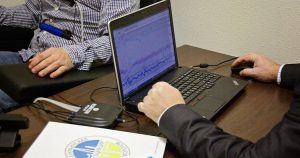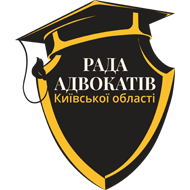While the use of a polygraph may look quite spectacular and innovative on screens, it cannot be considered as a sufficiently effective procedural tool in criminal proceedings under the current Criminal Procedure Code. Its legal ambiguity and probabilistic nature of results prevent their full use as evidence.
Polygraph in Domestic Realities
 What do a lie detector and the criminal process in Ukraine have in common? While in pop culture and American TV series, the polygraph, or so-called lie detector, is often depicted as an indisputable tool for detecting lies, in reality, its use in criminal proceedings in Ukraine remains a subtle and controversial topic.
What do a lie detector and the criminal process in Ukraine have in common? While in pop culture and American TV series, the polygraph, or so-called lie detector, is often depicted as an indisputable tool for detecting lies, in reality, its use in criminal proceedings in Ukraine remains a subtle and controversial topic.
Although the use of a polygraph is not directly provided for in the current Criminal Procedure Code, the law also does not contain a direct prohibition on this. This normative ambiguity has led to a situation where the polygraph is actively used in internal personnel procedures of law enforcement agencies, but its evidentiary value in criminal proceedings remains limited.
Recent years have been marked by the approval of instructions for the use of polygraphs in the structures of the Ministry of Internal Affairs, Ministry of Defense, Security Service of Ukraine, National Guard, prosecution authorities, and others. In particular, according to the order of the Ministry of Internal Affairs No. 920 dated 13.11.2017, the polygraph is defined as a special psychophysiological tool that records at least five indicators of physiological reactions to psychological stimuli without harm to the person.
Polygraph as Evidence – Innovation or “Inappropriate Creativity”?
The use of a polygraph during the pre-trial investigation, especially during interrogation, is a manifestation of the introduction of innovative technologies not only into the criminalistic component of modern science but also into procedural law. However, the effectiveness of such use largely depends on the professionalism of the polygraph examiner and the correctness of result interpretation. After all, physiological indicators themselves are only indicative, not absolute data, meaning that the information obtained during testing is probabilistic and indicative, rather than establishing facts with legal certainty.
To give the results of the examination evidentiary value, the polygraph must be used within the framework of judicial-psychophysiological expertise based on a relevant decision of the investigator, prosecutor, or ruling of the investigating judge or court depending on the stage of the proceedings. The expert’s conclusion drawn from the results of such examination is a procedural source of evidence.
Technical Component of the Process
As of today, the standard equipment is considered to be DSTU 8692:2016. The only polygraph that meets this standard is the “RUBICON” model, which is actively used in the practice of the Kyiv Scientific Research Institute of Forensic Expertise, the State Bureau of Investigations, the National Police, and others.
Professional polygraph examination includes three main stages: pre-test interview, the actual examination with the registration of indicators, and analytical processing of the polygrams based on the results of the examination. Modern devices record heart rate, blood pressure, respiration, skin conductivity, and other parameters in real-time. Based on comparing reactions to control and relevant questions, the polygraph examiner formulates a conclusion about the truthfulness of the answers.
Unfortunately, the results of the polygraph depend on the subjective interpretation of the polygraph examiner, which reduces their objectivity. Sensitivity to stress, physiological characteristics, or chronic illnesses can distort indicators, even if the person is telling the truth. This creates a serious risk of erroneous conclusions that can affect the course of the pre-trial investigation.
It is important to adhere to the principle of voluntariness. According to Article 28 of the Constitution, no person can be subjected to examination without their written consent. A polygraph examination cannot be equated with an investigative action – interrogation, so any arguments by law enforcement officials regarding the mandatory nature of undergoing it should be critically evaluated. Therefore, the presence of a lawyer during the interrogation of a person, even if they are a witness, can help avoid such manipulations by the pre-trial investigation authority.
Judicial Practice Insights
Judicial practice shows a “cautious” attitude of courts towards the polygraph. For example, some court decisions demonstrate a gradual recognition of the significance of polygraph examination results.
In case No. 301/943/19, the Irshava District Court of Zakarpattia Oblast recognized the conclusion of the judicial psychological expertise with a polygraph as proper evidence. However, in case No. 676/7835/19, the Khmelnytskyi Court of Appeal emphasized the lack of direct permission to use a polygraph in criminal proceedings and rejected its results as evidence. In its decision, the appellate chamber of the High Anti-Corruption Court in case No. 757/13635/17-k indicates that “polygraph indicators are exclusively probabilistic and indicative.” A similar position is traced in the rulings of the Supreme Court, including cases No. 621/1308/18 and 234/4850/17.
Thus, the polygraph can only be used as an auxiliary tool that complements other evidence. Its results have limited evidentiary value since the opposing party can always appeal to the hypothetical nature of such examination conclusions.
International Experience of Application
International practice is also ambiguous. In over 70 countries worldwide, the polygraph is used as an auxiliary tool, with the United States being a leader. There, its application is regulated at both federal and state levels, for example, by California Law No. 351.1 of 1983. In some states, the polygraph is directly provided for in procedural law in the investigation of various “sensitive” categories of criminal offenses, such as sexual crimes.
Even though at the level of specific states, the polygraph is used more widely, its results are often not recognized as evidence in court and are used solely for preliminary assessment of truthfulness.
Conclusions
Therefore, while the use of a polygraph may look quite spectacular and innovative on screens, it cannot be considered as a sufficiently effective procedural tool in criminal proceedings under the current Criminal Procedure Code. Its legal ambiguity and probabilistic nature of results prevent their full use as evidence.



